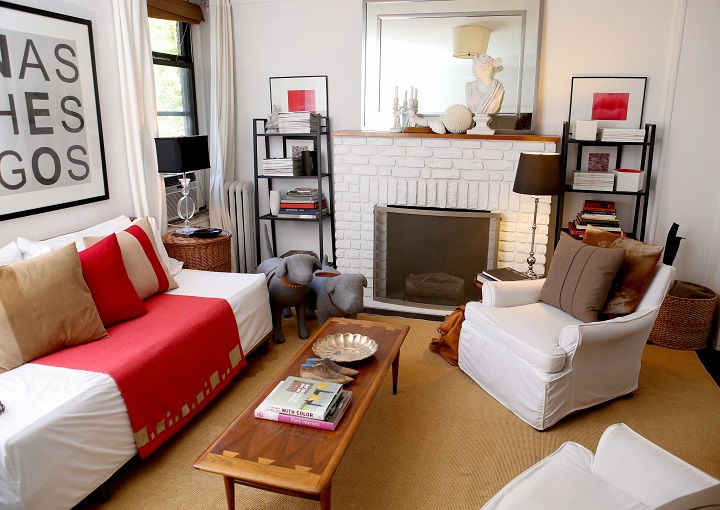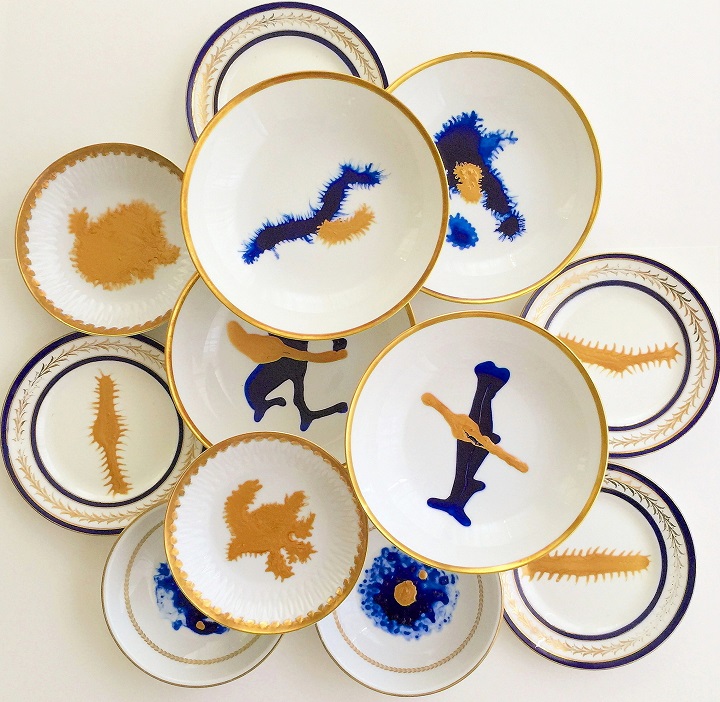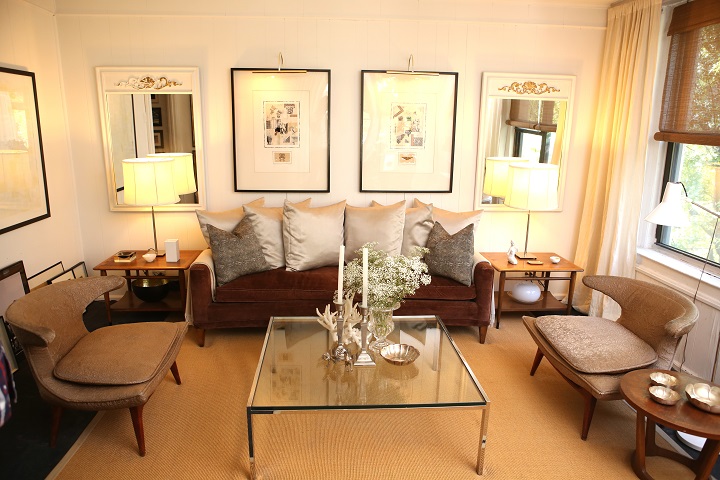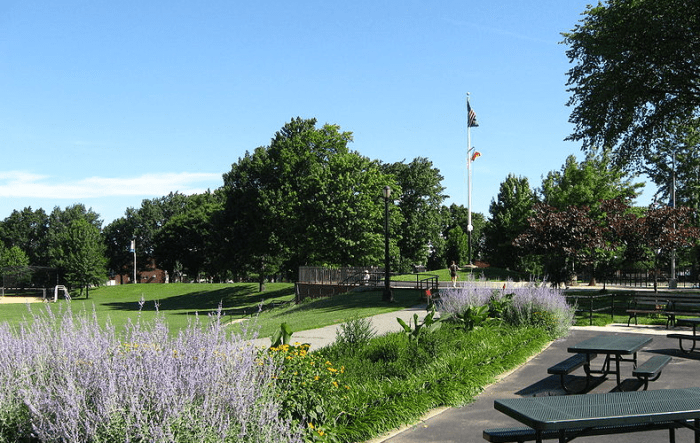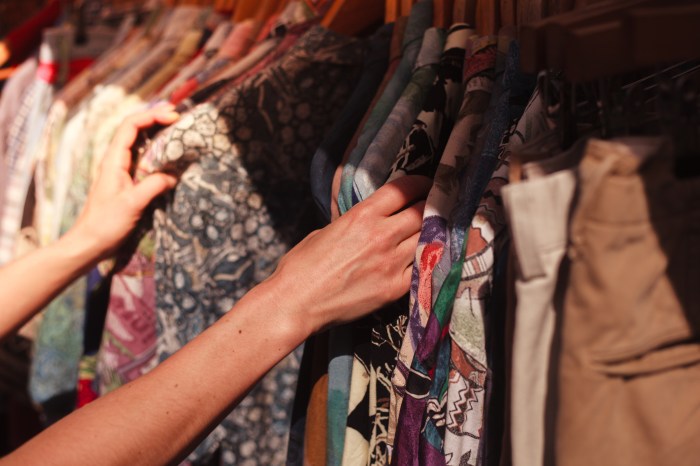Interior designer Peter Valcarcel has called his Astoria apartment home for more than a decade, and as you’d expect from someone of his profession, he has made it his own — using almost exclusively locally bought materials.
Many pieces of furniture come from The Furniture Market on 23rd Street and Astoria Boulevard; he bought his sofa at the Salvation Army on Steinway Street; and he found side tables on the street.
He also designs home accessories such as one-of-a-kind porcelain plates, rugs that are homemade in his home country of Peru, and throw pillows. He frequents fabric stores on 30th Avenue, where he finds “obscure, special” fabrics for his pillow collection.
“Living in Astoria has been an inspiration for me,” Valcarcel said. “It’s a place that I call home, and it’s a place that has afforded me [the opportunity] to experiment in my style. And because I have discovered fabulous things in stores and sometimes on the streets, I have been able to develop and figure out what my style is as an interior designer. That is one of the great things about Astoria in my personal experience. I like the fusion that it has of so many different cultures in one very, very small area.”
Valcarcel was born in Lima, Peru — he moved to New York at age 17 — and he has little pieces from his culture scattered throughout his apartment.
For example, in Peruvian high society, Valcarcel explained, every household has a pair of silver fighting cocks that come in an ashtray. Normally the birds are very big and one would put them on the dining table, a tradition that he calls “very old-fashioned.”
His mother gave him a gift of smaller birds without the tray, which Valcarcel says seem more contemporary and less like a piece that would belong in an old-fashioned Peruvian house. They sit on his coffee table.
Valcarcel also has two pairs of shoemaker forms (an adult pair and a baby pair) that he found in a little market in Peru.
“When I’m in other cities, I try to visit as many flea markets as possible,” Valcarcel said. Here in New York City, he’ll go to flea markets in Chelsea and a thrift shop on Steinway Street in Astoria. He also loves visiting the enormous antique shops in Pennsylvania. While at these markets, he shops both for himself and for other projects that he is working on.
When he designs his own and others’ apartments, he starts with looking at the space.
“When I walk into a space, I look at the architecture of the space itself, and that to me determines what you’re going to do with the space,” he said. “In [my apartment], there’s not truly architectural value to the space, so it needed to be much more casual. There aren’t beautiful moldings or beautiful windows. Even though it’s a very nice apartment, it’s a very simple apartment.”
His style is “very eclectic,” he said. “I think it has a touch of modern mid-century, but it’s very much mixed with much more traditional things. I like very earthy tones, and because of the way the apartment felt when I moved in, it does have a sort of summer cottage feel to it.”
He asks clients what they want to do in a room and then works from there.
“For me, interior design is function and beauty, and the function for my apartment is to have people over,” he said. “So I wanted to create areas where people will be able to sit down and have a conversation.”
Valcarcel went to school for art — he originally wanted to be a painter — and started his career in visual merchandizing and fashion. He then worked in home departments of stores such as Barneys, Calvin Klein, and SeaCloth in Connecticut.
One of his clients asked Valcarcel to design her apartment, and that’s how he began to make the transition to residential work.
“I thought, ‘Oh, wow — this is what I should be doing,’” he said.
He’s been able to take lessons he learned from his work in home departments and translate them to his interior design. For example, around his apartment, framed pieces of artwork lean against the walls.
“That’s something that I learned at Calvin Klein: just leaning things,” Valcarcel said. “I find it a little more casual, and sometimes they cover things.” He pointed to one framed piece of artwork leaning in the hallway. “In this case, it’s covering the wire.”
Valcarcel’s hallway holds a small selection of his personal photos.
“I like to have pictures only in one place,” he said. “So I always determine one space in the apartment or in the home as the gallery, and that’s where I’ll have personal pictures.”
Valcarcel’s apartment might look to any visitor as if it’s a finished product, but the interior designer likes to always be changing things in his space.
“Things need to have a life span, and then you need to move on to something else,” he said. “A place that is not toughed or utilized well is a space that dies.”
So, despite all the work he has put into making his apartment his own, the only thing he couldn’t part with is his matching pair of mid-century, horn-style chairs.
“If there is a fire in my apartment, I will carry these two chairs on my back all the way down the stairs,” Valcarcel said. “I would save these two chairs — the rest can go.”

